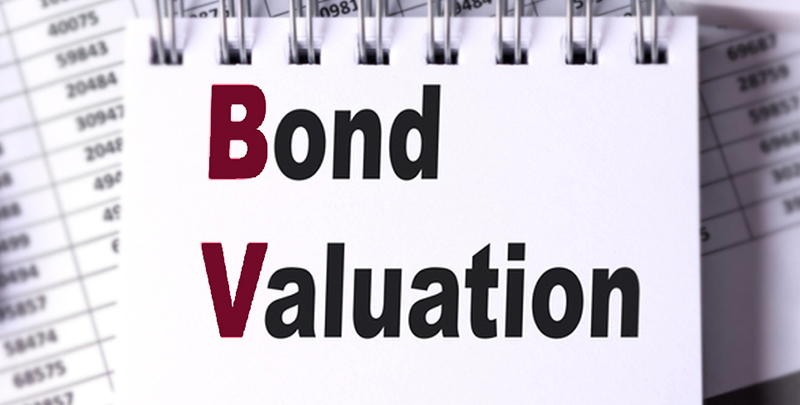Understanding bond valuation is essential for anyone looking to navigate the fixed-income securities landscape effectively. This comprehensive guide explores the fundamental principles of bond valuation, the components that influence pricing, and how to calculate bond price. Gaining insight into bond valuation equips you with the knowledge to make informed decisions in the bond market, accurately evaluate yield potential, and align investments with your financial goals.
What is bond valuation?
Bond valuation is the analytical process of determining the fair market value of a bond based on its expected future cash flows and prevailing market conditions. It helps investors assess whether a bond is appropriately priced, overvalued, or undervalued. It is calculated using the bond valuation formula that takes into account several key variables, including the bond's face value, coupon rate, time to maturity, and the required rate of return (or yield to maturity). The relationship between bonds and valuation underpins critical investment strategies, especially in managing interest rate risk and portfolio diversification.
Components in bond valuation
Several critical components influence the valuation of bonds, and understanding each element is vital for accurate pricing:
- Face value (par value): The principal amount that the bond issuer promises to repay at maturity, typically set at ₹1,000 or another standard denomination.
- Coupon rate: The interest rate that determines periodic interest payments to bondholders, expressed as a percentage of the face value.
- Maturity period: The duration from the date of bond issuance until the bond issuer repays the principal amount, ranging from a few months to several decades.
- Yield to Maturity (YTM): The total return anticipated on a bond if it is held until maturity, taking into account the current market price, coupon payments, and the time remaining.
- Discount rate: The rate used to calculate the present value of future cash flows, often based on the bond's YTM or the required rate of return for similar investments.
The interplay between these components forms the basis of the bond value formula that investors use to determine whether bonds represent good value propositions in their portfolios.
How are bonds valued?
The process of how to calculate bond price involves determining the present value of all future cash flows associated with the bond. The standard approach follows these steps:
- Identify cash flows: Calculate the periodic coupon payments and the face value payment at maturity.
- Determine the appropriate discount rate: Usually, the yield to maturity or required rate of return.
- Apply the bond valuation formula:
Bond Price = ∑(C/(1+r)^t) + F/(1+r)^n
Where:
- C = Annual coupon payment
- F = Face value
- r = Discount rate (YTM)
- t = Time period until each payment
- n = Total periods until maturity
For example, consider a two-year corporate bond with:
- Face value: ₹1,000
- Annual coupon rate: 5% (paid semi-annually)
- YTM: 3%
Using the bond valuation formula and calculating the present value of all payments yields a bond price of approximately ₹1,038.54.
Factors that influence bond valuation
Multiple factors can significantly impact bond valuation beyond the essential components:
- Interest rates: The inverse relationship between interest rates and bond prices is fundamental to bond valuation. When market interest rates rise, existing bond prices fall, and vice versa.
- Credit quality: The issuer's creditworthiness affects the bond's risk profile and required yield. Higher-rated bonds typically command higher prices and lower yields compared to lower-rated counterparts.
- Market conditions: Economic indicators, inflation expectations, and overall market sentiment influence demand for bonds, affecting their prices.
- Liquidity: More liquid bonds (easily bought and sold) generally have higher valuations due to reduced trading risks.
- Time to maturity: The duration until maturity impacts how sensitive a bond's price is to interest rate changes, with longer-term bonds typically exhibiting greater price volatility.
Bond pricing and market dynamics
Market factors, including interest rates, issuer credit ratings, supply and demand, and overall economic conditions primarily influence bond pricing. As interest rates increase, the price of existing bonds usually decreases, because newer bonds offer higher yields, making older bonds less appealing. On the other hand, when interest rates decrease, bond prices generally increase.
The issuer's creditworthiness is also a key factor; bonds with higher ratings are perceived as less risky, resulting in greater demand and higher prices, while bonds with lower ratings typically offer higher yields to compensate for the increased risk.
Economic factors, such as inflation, GDP growth, and fiscal policies, can also influence bond pricing. For instance, high inflation can erode the value of future bond payments, causing bond prices to drop. Supply and demand also influence pricing: when the supply of bonds exceeds demand, prices may fall, and when demand is high, prices tend to rise.
Conclusion
By understanding the components, formulas, and factors that influence bond prices, investors can better assess whether bonds represent good value propositions for their portfolios. Whether you're an individual investor building a retirement portfolio or a financial professional managing client assets, proficiency in bond valuation techniques will enhance your ability to navigate the complex bond market and improve investment outcomes.
Also Read: What are Floating Rate Bonds?
FAQs
How do bonds get valued?
Bonds get valued by calculating the present value of all future cash flows using the bond valuation formula. This process involves discounting each coupon payment and the face value at maturity back to today using an appropriate discount rate, typically the yield to maturity. The sum of these discounted values represents the bond's fair market price.
What is the formula for bond valuation?
The standard bond valuation formula is:
Bond Price = ∑(C/(1+r)^t) + F/(1+r)^n
Where:;
- C = Periodic coupon payment
- r = Discount rate per period
- n = Number of periods
- F = Face value
This formula calculates the present value of both the coupon payments (the first term) and the face value at maturity (the second term). For semi-annual coupon payments, the formula must be adjusted by dividing the annual coupon rate and discount rate by 2 and multiplying the number of periods by 2.
Disclaimer: This article is for information purpose only. The views expressed in this article are personal and do not necessarily constitute the views of Axis Bank Ltd. and its employees. Axis Bank Ltd. and/or the author shall not be responsible for any direct / indirect loss or liability incurred by the reader for taking any financial decisions based on the contents and information. Please consult your financial advisor before making any financial decision.








